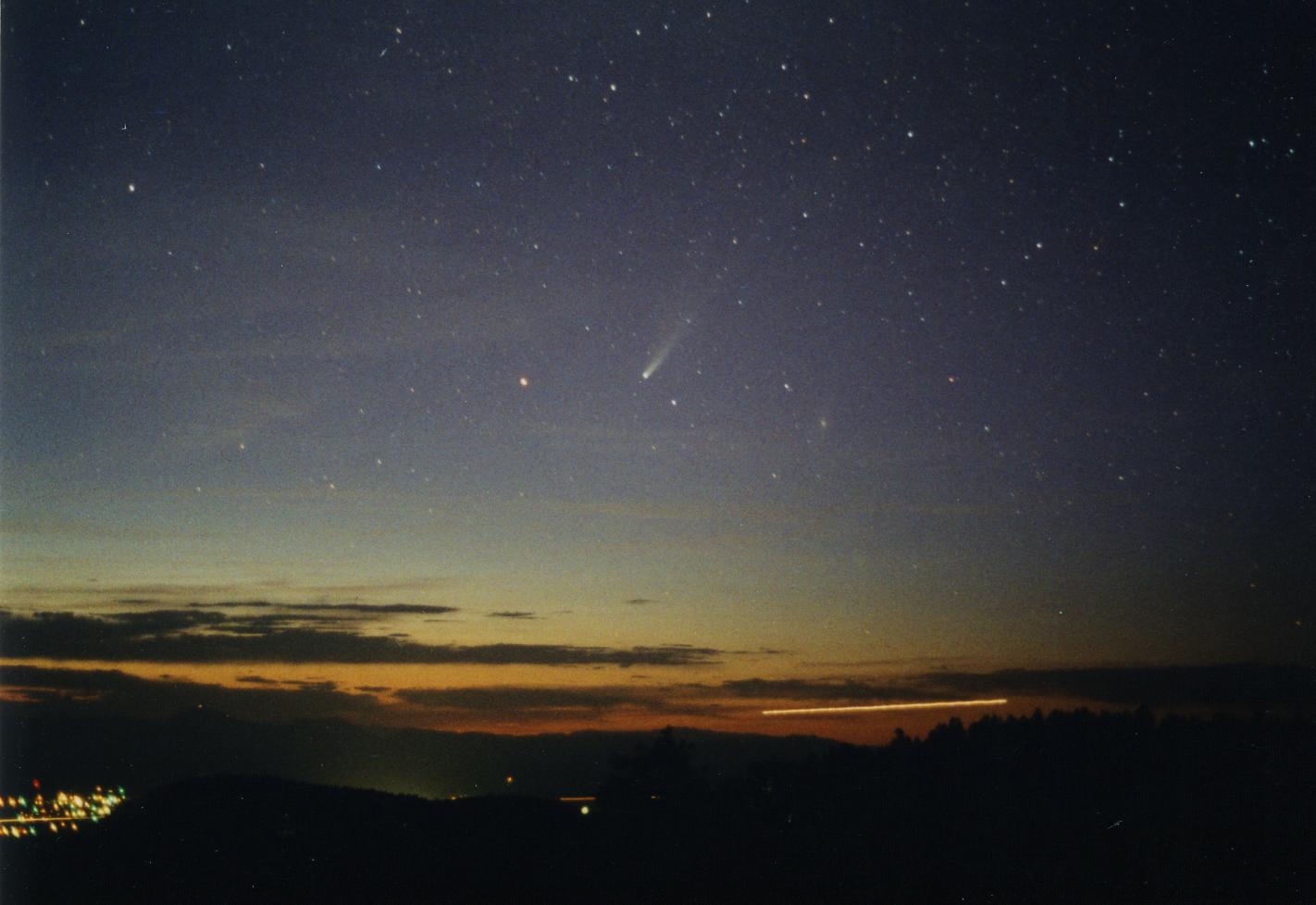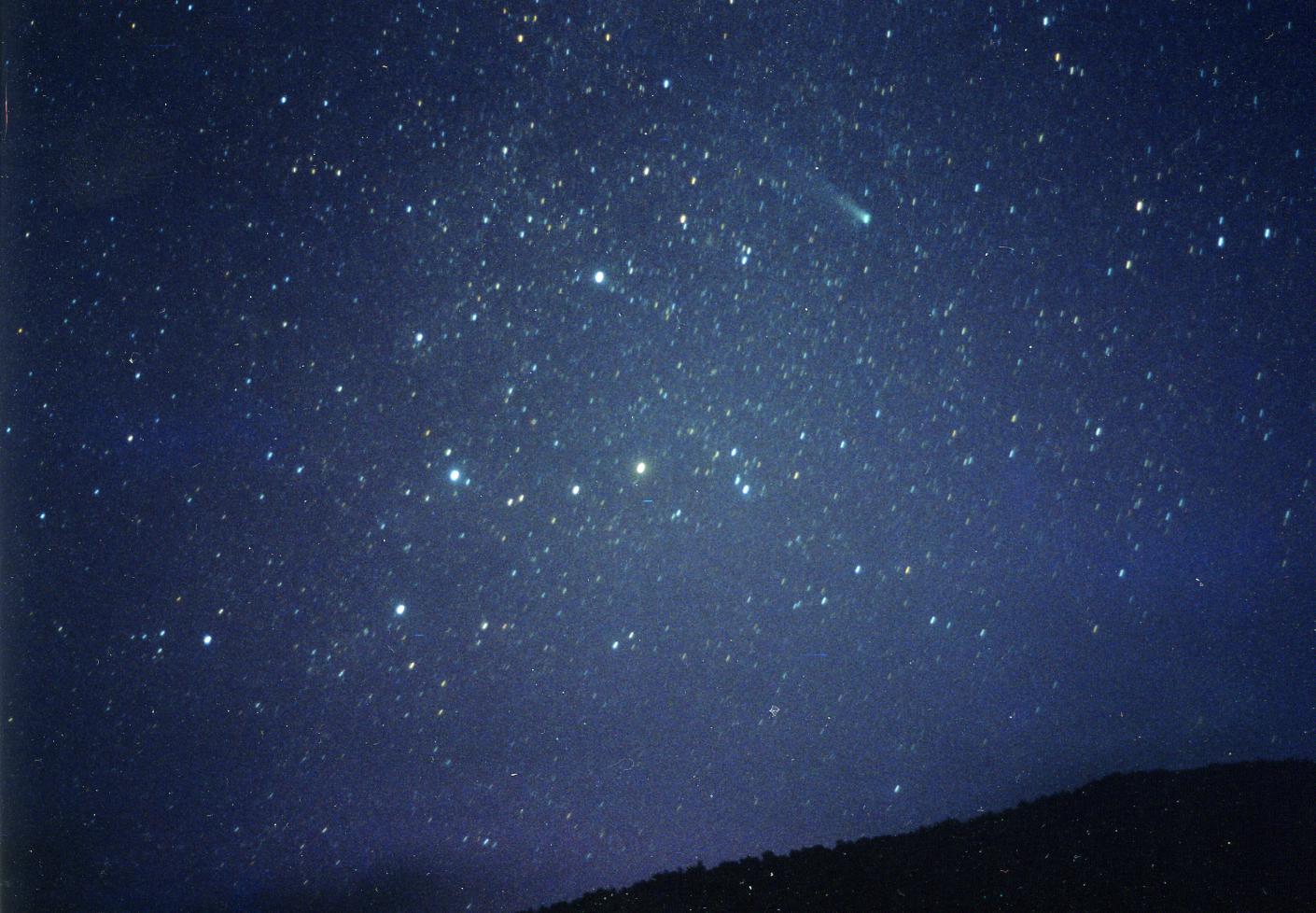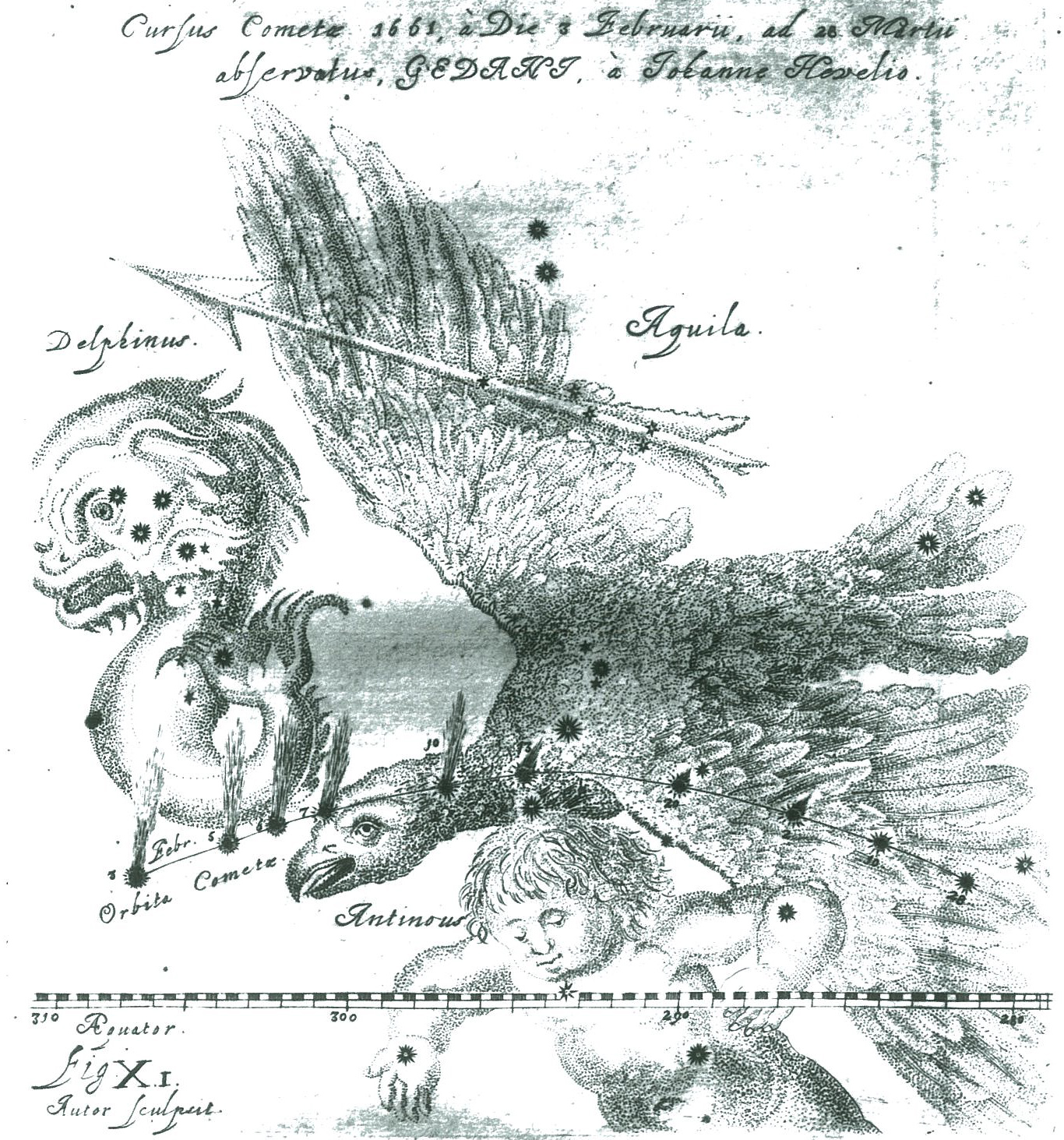
Perihelion: 2002 March 18.98, q = 0.507 AU
One of the many successful Japanese comet hunters of the 1960s was Kaoru Ikeya who, coming from a family of modest means, built a homemade telescope for the equivalent of US$20 and began to hunt comets with it. He discovered his first comet in 1963 and would go on to discover four more over the next five years, one of these being the brilliant Kreutz sungrazer Comet Ikeya-Seki 1965f (a future “Comet of the Week”). After a hiatus of over 34 years Ikeya discovered his sixth comet on the evening of February 1, 2002, which an hour and a half later was independently discovered by a Chinese amateur astronomer, Daqing Zhang, who had been inspired by reading of Ikeya’s earlier successes.
Comet Ikeya-Zhang was around 9th magnitude at the time of its discovery, but brightened rapidly, and had already reached 5th magnitude and naked-eye visibility by the end of February. By mid-March it had reached 4th magnitude, and during the latter part of March, shortly after perihelion passage, it was a 3rd magnitude in the evening sky with a bright naked-eye dust tail up to 5 degrees long. Shortly thereafter it went through inferior conjunction and entered the northern hemisphere’s morning sky, and although receding from perihelion it was approaching Earth, with a minimum distance of 0.40 AU taking place on April 30. It faded slowly, still being around 4th magnitude during the second half of April and with a naked-eye tail for which I measured a maximum length of 8 degrees.

Following its closest approach to Earth the comet continued fading somewhat slowly, with the coma growing to a maximum size of around 18 arcminutes in mid-May. By the end of May it finally dropped below naked-eye brightness, and afterwards I continued to follow it visually until shortly before mid-August. The final observations were obtained in early October.
Even as early as mid-February orbital calculations were beginning to show that Comet Ikeya-Zhang’s orbit is distinctly elliptical, and before long the calculations indicated that it should have previously returned sometime in the early 1660s. It so happened that a fairly bright comet was observed throughout Europe in February and March 1661 including, particularly extensively, by the well-known Polish astronomer Johannes Hevelius who observed from the port city of Danzig (now Gdansk), and who first recorded the comet on February 3 of that year. A detailed study of Hevelius’ observations of the 1661 comet by Dan Green (of the IAU’s Central Bureau for Astronomical Telegrams) established that Hevelius’ comet and Comet Ikeya-Zhang were indeed one and the same object, and it was then assigned the periodic comet designation 153P. With an orbital period of slightly over 360 years Comet 153P/Ikeya-Zhang becomes the longest-period comet that has been definitely seen on two different returns.

There have been suggestions made that a comet observed from the Orient in 1273, and another one observed from the Orient and from Europe in A.D. 877, might be even earlier returns of Ikeya-Zhang, but the positional data for those two comets is too sparse to allow positive identifications to be made. Meanwhile, Japanese astronomer Syuichi Nakano has calculated that it should return again in the year 2362; if his calculated perihelion date of September 1 is close to correct, the viewing geometry then would be quite poor, with the comet’s being on the opposite side of the sun from Earth around the time of perihelion passage and remaining at a fairly small elongation for several months on either side of that.
The appearance of Comet Ikeya-Zhang is rather poignant for me, for three days after its perihelion passage my father, Nile Hale, passed away at the age of 83. Among other things, he was the person who initially got me interested in studying astronomy, and although he wasn’t any kind of astronomer himself, he did show a bit of interest in the subject, and he took one of the photographs of Comet West 1975n that I display in that object’s “Comet of the Week” presentation. Although in all honesty I don’t subscribe to any such beliefs, a part of me likes to think that Comet Ikeya-Zhang is escorting my father’s essence with it as it departs Earth for places unknown, and will bring it back when it returns around 2362 to check up on us and see how we’re doing. I wonder what kind of world our descendants might have to show him then.
More from Week 16:
This Week in History Special Topic Free PDF Download Glossary
Ice and Stone 2020 Home Page


